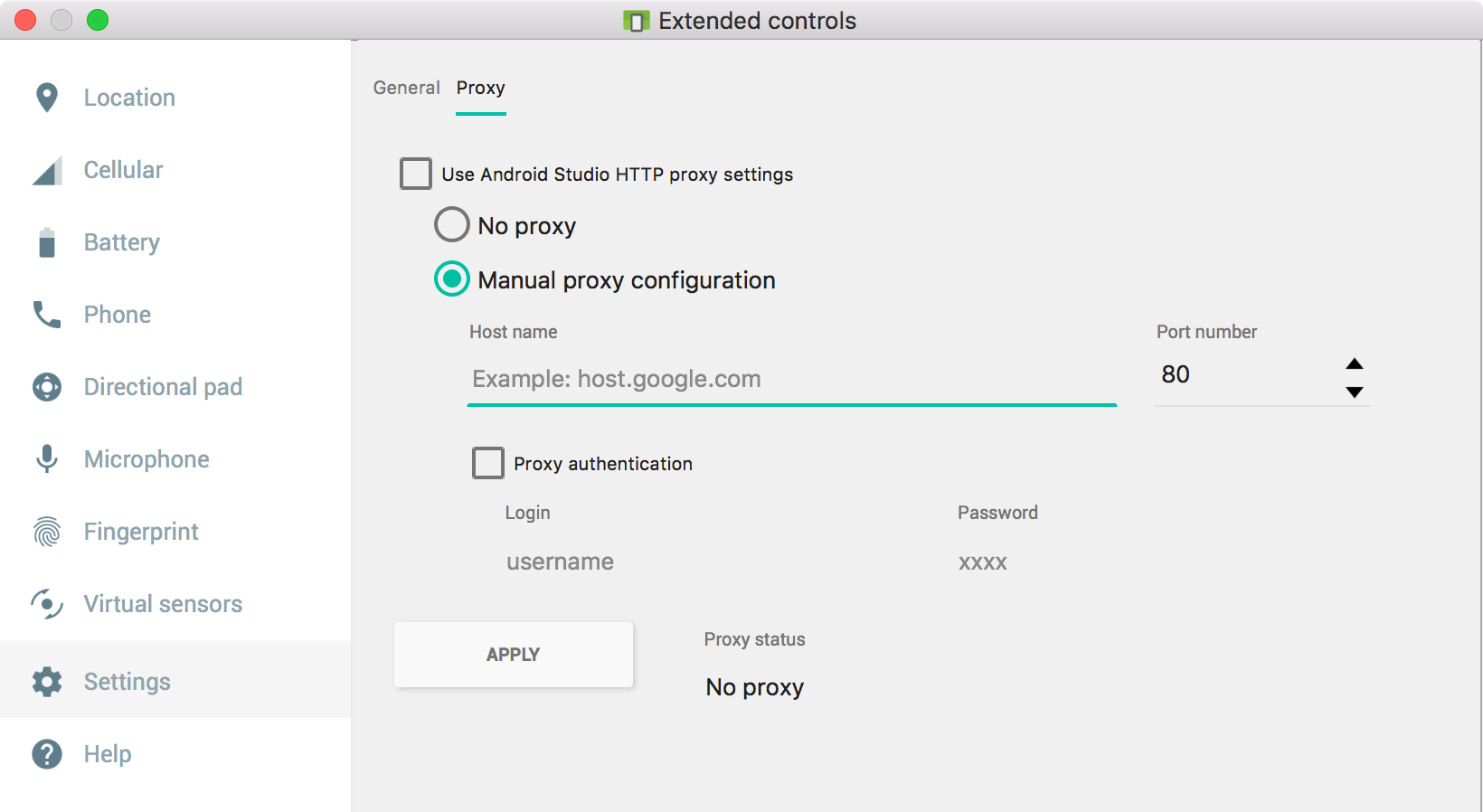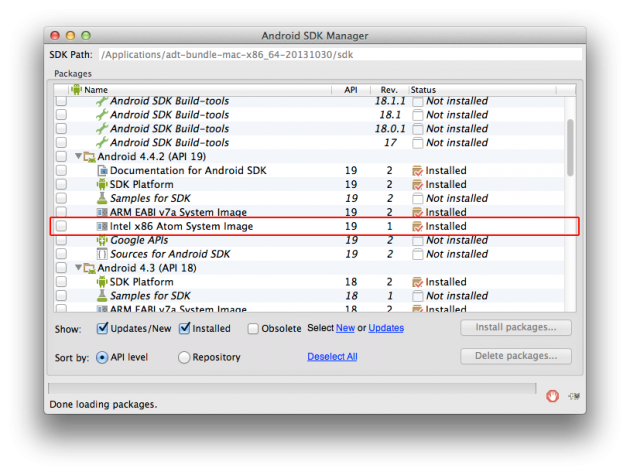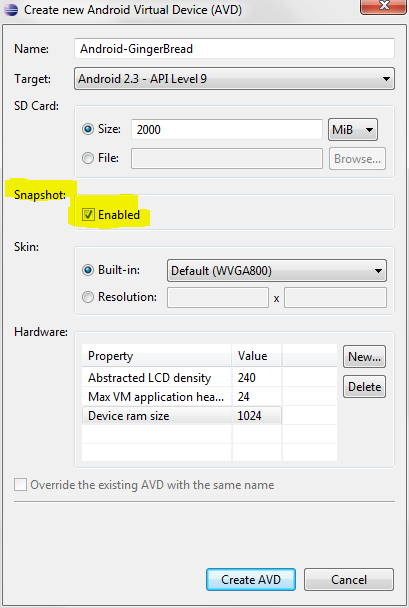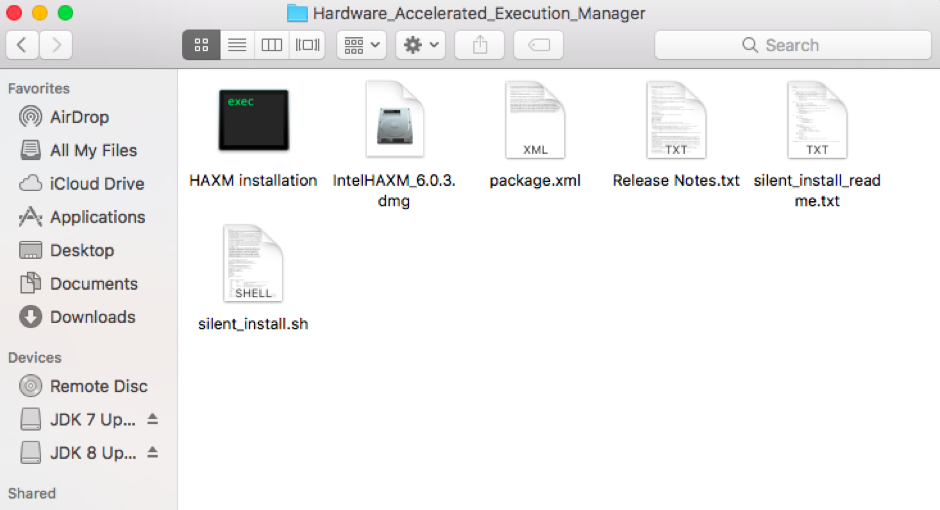Speed up a slow android emulator Step 1) Download HAXM Driver using SDK Manager. To improve the performance of an emulator first thing you will need is installing the “Intel Hardware Accelerated Execution Manager Driver” from SDK Manager you get with Android ADT. Look at the screen shot below. Emulator Accelerator Option. Android emulators can be a bit slow and when I say slow, I mean REALLY slow. This article attempts to cover a two of the most prominent issues when using an Android emulator with Xamarin. Its speed and how buggy the debugging can be. If that makes sense.:/.
- Testing on multiple mobile devices is costly, time consuming and the default Android emulator is notoriously slow. So, what should we do? That's easy - start using a properly fast Android emulator. When developing Android applications, you have to keep in mind all the different Android OS versions and various screen sizes and resolutions.
- Build 21354.corelease.2. I'm back to the Android emulator. It's working (unlike 2 or 3 mths ago) - but it's very slow. Android Studio told me: Detected ADB The ADB binary found at D: AndroidSDK platform-tools adb.exe is obsole.
Testing on multiple mobile devices is costly, time consuming and the default Android emulator is notoriously slow. So, what should we do? That's easy - start using a properly fast Android emulator.
When developing Android applications, you have to keep in mind all the different Android OS versions and various screen sizes and resolutions. The main objective before releasing an application is to find bugs and design imperfections.
Default Android emulator
The great thing about using an emulator for development is that it gives you an opportunity to develop applications without having a real Android device. The default Android emulator comes together with the Android SDK and can be found in the 'tools' folder.
So far so good, we have our cake, but can we eat it? The answer comes about 5 minutes after we hit the 'Launch' button. Go grab a coffee. Have breakfast. Come back. Wait another 5 minutes. Maybe even more.
Finally - the emulator launches, only to show how slow it actually is.
All these performance problems stem from the fact that it emulates an ARM processor so it can run the actual code of your application. It accomplishes that by providing dynamic binary translation of the device machine code to the OS and processor architecture of your development machine.

Basically, it does a lot of mumbo-jumbo to pretend it's an ARM processor - when actually it isn't.
OK, it's slow. So what can we do about it?

- Well, first, we can help our CPU out by delegating the rendering process to the GPU by checking 'Use Host GPU' checkbox in AVD's edit window. The screen should now look better and be more responsive. That's because the CPU is not dealing with the tedious work of doing rendering anymore. But, that's still not fast enough.
Android Emulator Slow
- We can download Intel Atom (x86) images and, while we're at it, download Intel x86 Emulator Accelerator (HAXM, for Mac and Windows only). This will enable virtual machine acceleration capabilities of the Intel CPU (for more information check this link).
Now we're getting somewhere, once this baby starts up, it should run fast and smooth.
You could say that this level of speed should be sufficient. That may be true, but an issue with the Intel x86 images is that you don't get Google Apps, they only come with ARM images. This is important if you're testing an app that uses GMaps, or Google Play Services.
So, as we've seen, ARM images aren't fast enough even with hardware acceleration. And emulators don't have the Play Store. What now?
Genymotion by Genymobile
Genymotion is a new, fast Android emulator developed by the French company Genymobile. It's based on the open-source project AndroVM, and the first beta version was released back in June.
It runs on all major platforms (Mac, Windows, Linux). For now it's freely available, but there is also going to be a paid version.
According to AndroVM blog, the free version will be feature-rich, and the paid version will be intended for large companies needing a higher level of collaboration on Genymotion.
How to use it?
Genymotion relies on Oracle VirtualBox to work (version 4.1 or above). So...
Download and install VirtualBox. For Windows users it's not necessary to install VirtualBox separately, because it is available from the Genymotion site, bundled with the Genymotion emulator.
Go to Genymotion website and sign up. You'll receive a validation mail, so just click on the validation link to proceed.
Download and install the Genymotion emulator (the current version is 1.1.0).
Start Genymotion. You might need to configure path to your Android SDK location in Genymotion settings (probably if you've installed SDK in a non default location). Since this is a first start, there are no devices. Click on 'Add' and download new device. To see available devices, write your credentials in the pop-up dialog and click 'Connect'.
Select the device and click 'Start'.
It starts quickly and is insanely fast! It's a little awkward to start the emulator separately, but Genymotion provides Eclipse and Android Studio integration through plugins, also available on Genymotion website. To use the plugin, you have to provide a path to Genymotion installation and Android SDK, as well.
OK, it's fast. Is that it?
Well, for me, the sheer speed of Genymotion is what got me using it in the first place. Which is kind of funny, because in the first version you couldn't even rotate the device.
But, alongside the speed bump, it also provides GPS, compass and battery control via some good-looking widgets.
Battery control widget
The GPS widget even provides GMaps for selecting mock locations, which is really nice for testing location based apps.
Device angle control and Play Store
Through the Genymotion shell it's also possible to control the device's angle (accelerometer), but it would be cool to control it using a widget, something like the Windows phone emulator does.
Genymotion devices with Google Apps also come with the Play Store preinstalled. This comes in handy if you want to test an app from the Play Store quickly.
Multiple screen sizes
Multiple screen sizes are one of Android developer's worst nightmares. There is a huge number of different screen configurations of Android devices.
Genymotion, as well as the default emulator, offers custom configuration of device's screen. In the list of available devices, select the device for which you want to change screen configuration and click on the monitor icon on the right side. Then simply select one of the predefined screen resolutions or create your own.
Be careful when choosing resolution, because you may end up with something rather strange…
Where it comes short
The main setback of Genymotion is that it only provides devices with API version 16, 17 and a preview version of Android 4.3 (API 18). If we take a look at Google Dashboard, we'll see that Gingerbread still holds about 33% of all devices (API 10).
So, for testing on that platform you still need either a default emulator or real device, which kind of defeats the purpose of Genymotion as a testing platform.
And there is no camera, which I don't miss, but could be really useful.
In the future, we can expect even more features, like taking screenshots or video screen capturing (which would be great for making demonstration videos). An accelerometer widget would be cool, and even a camera would be nice, but we can only wait and see.
Final thoughts
Well, you can never really get rid of real devices, because you'll always want to test an app on a real device before releasing it. But during development I recommend using a Genymotion emulator. Even though it doesn't cover all major Android OS versions. It's fast, stable, the GPS sensor manipulation is awesome and with the device rotation feature added to the 1.1.0 version - it's truly the way to go.
Android Emulator Slow Ubuntu
Also, deploying apps is almost instant and that can save you a lot of time when you're doing small changes to the app. But you have to watch out since the Genymotion emulator runs faster than real devices themselves, giving you a false impression of the performance of the app.
Always test on a real device!
Like this article? Sign up for our monthly newsletter and never miss any of them.
So, you were trying to figure out how to run an android application on pc and came across android emulators. If you are a gamer and you are looking android emulators for low end pc. If you are a developer looking for an emulator for you to work best with. We have it all.
Android Emulator Slow Startup
We have included the link’s for you to download the emulator that is best for your needs.
Android Emulators For Low End Pc
These emulators are for all types of users. From gamers to application developers or testers, we have listed it all. Some of them are not free, but most of them are free. They all have a good performance and can also handle most of the applications easily.
Let’s start with our list of best android emulators for low end pc.
Nox Player
Nox player is one of the best Android emulators available to us right now. It is somewhat like the Bluestacks with some extra features in it. Nox is an android emulator for PC that gamers would love to use. Its special features allow users to have control over games using keyboard & mouse. It also simulates the gestures when playing games on the phone, using mouse & keyboard. The most amazing feature it has is, that it allows users to assign controls to some extent, for which gamers would be really thankful.
MEmu Player
Memu is a great Android emulator for low end PC. This emulator allows users to access advanced options. It comes with a root function along with a toolbar. Also supports keyboard, mouse and a gamepad for gaming. This android emulator gives good performance in games, so if you are looking for gaming it would be a nice option for you. They have a unique feature named multiple instances, with it you can run more than one game side by side on the same account or same game with multiple accounts.
Bluestacks
Bluestacks is fast and stable. There are many features in it & keep on adding more with time. When it comes to android emulators for PC, it is the most famous. Many people know about Bluestacks or must have heard its name at least once while searching for an android emulator. With Google Play Store App installed in it, users can download anything easily. You can even live stream games on Facebook or anywhere you want in it. Full-screen mode is also available in Bluestacks.
Bluestacks can give a good performance but it does require some configuration to set it up to give better performance. On some systems, it works well. But if you have tried Bluestacks and it didn’t work well on your system then you should try NOX Player.
Andy Os
This emulator gets the job done. It simulates various aspects of Android in its Pc android emulator software. Andy OS simulates basic aspects of the Android system like the launcher. You can play games on it, as it can handle applications that require high performance. Users even the ability to set up root access, if they want. It can run on a Pc as well as Mac. Andy also provides seamless sync between desktop and mobile devices.
Genymotion
Genymotion is a really great emulator for developers, who wish to test their applications on various devices without installing many emulators. Using Genymotion a user can configure the emulator according to their needs. Users can select the type of device and the Android version while configuring the emulator. It adapts itself according to the type of device and the android version on it. You can still run games on it. But this is an emulator, developers would like more. Thus landing on our list of best android emulators for low end pc.
Ko Player
Ko Player is simple and easy to use android emulator. They give their users the ability to simulate a gaming console on a keyboard using their mapping feature. Their main audience is gamers, this emulator gave users the option to record their game and upload gameplay on Youtube or any other video sharing site.
Android Droid4X
Droid 4x is an emulator that could be run on almost most of the Pc with moderate configuration. You can install games on it externally and it also does not require any additional software to run. This emulator is lightweight and easy to use. Their user interface gets better and better with time. It also supports a screen zoom feature and for gamers, it allows them to record while gaming.
Jar Of Beans

Jar Of Beans does not require any installation. Just download and run the program. It can handle heavy games and applications easily. This emulator supports hardware acceleration manager which improves its overall performance. Its original interface can be a little tricky to use but once it’s switched to the Android interface, it will be easy to use.
Remix OS Player
This is an android emulator that runs Android Marshmallow. Currently, it supports only INTEL processors., but it does work on some AMD processors. Installing this is really easy and also its simple to use. It gives the users many options to configure & customize their gaming experience.
AMIDuOS
AMIDuOS works really smoothly. They have a free trial and comes in two versions Lollipop and Jelly Bean costing around $10 & $15 respectively. It can handle most of the games & run it smoothly. AMIDuOS has good features and performance. But is not much preferred by application developers.
If you are a student, you might want to take a look at these useful apps.

Conclusion
There are many emulators for you to choose from. Most of these android emulators for low end pc will be best for you if you just want to game. You can choose any emulator you want according to your need. We have listed emulators that are good for gaming & also that will be useful for developers.